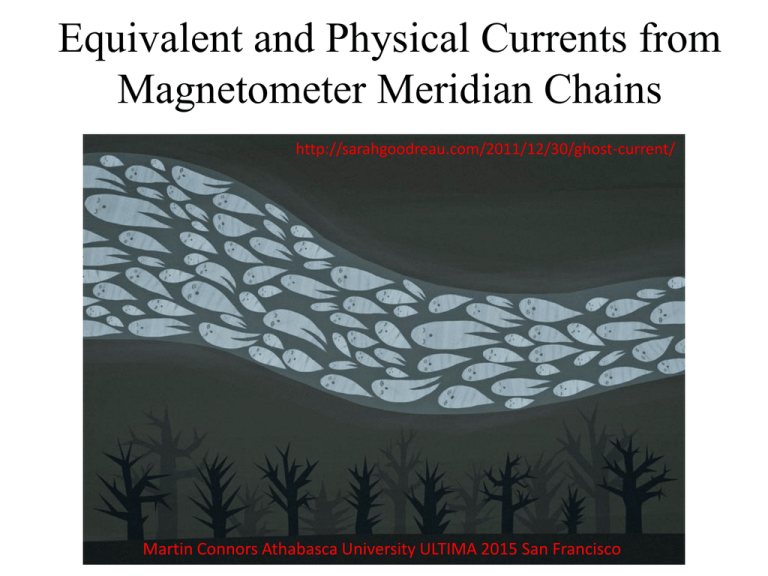Equivalent and Physical Currents from Magnetometer Meridian Chains
advertisement

Equivalent and Physical Currents from Magnetometer Meridian Chains http://sarahgoodreau.com/2011/12/30/ghost-current/ Martin Connors Athabasca University ULTIMA 2015 San Francisco Techniques can be based on equivalent currents (SECS): Olaf Amm, Dissertation, 1998 Automated Forward Modeling proposes a physical model and optimizes its parameters Can inversion in a meridian be the same for both approaches? Title: Inverting magnetic meridian data using nonlinear optimization Authors: Connors, Martin; Rostoker, Gordon Affiliation: AA(Athabasca University Observatories), AB(Department of Physics, University of Alberta) Publication: Earth, Planets and Space, Volume 67, article id. #155, 20 pp. If the FAC are far away, then their effect is small in AFM. Inversion with online 1-d SECS at FMI and with AFM gives essentially the same result. Is this result real? AMPERE for this event spans IMAGE Array Use FAC Integration Technique of: M. Connors, R. L. McPherron, B. Anderson, H. Korth, C. T. Russell, X. Chu 7/14 Electric Currents of a Substorm Current Wedge on 24 February 2010 Geophys. Res. Lett. 41, 4449-4455 and assume that any imbalanced FAC flows across the IMAGE meridian The net down FAC in the morning sector is equal to the cross-meridian current from AFM The net up FAC in the evening sector is equal to the cross-meridian current from AFM Conclusions • We showed that SECS 1-d and AFM (AMM) gave similar magnitude for current across the IMAGE meridian, SECS says it is “equivalent” current, AFM that it is “physical” • We showed that AMPERE net FAC was the same in magnitude as the AFM cross-meridian current • If FAC is far enough away (easily verified with Y component) then physical current and equivalent current are shown to be identical, as might be expected



